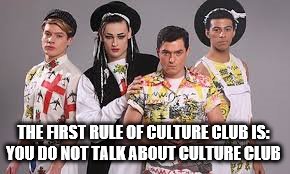The typed draft of your paper is due today.
You will have 1 partner read through your paper marking the following:
Proofreaders:
1. The first read: You will start with the LAST sentence. You will read ONE sentence at a time until you are reach the top of the paper. Yes, you are reading the paper BACKWARDS. In this reading you are ONLY looking for grammatical and spelling errors, and sentence clarity. Is there subject-verb agreement? Pronoun-antecedent agreement? Sentence mechanics are correct? Diction choices accurate? No "YOUS". No "I". If you find an error, make a comment in
BLUE. Do not fix the error.
2. The second read: You will start at the TOP of the paper. In this read you will be looking solely at CONTENT. Does the paper have a CENTRAL ARGUMENT/CLAIM? Is the evidence logical and sufficient to the claim? Is the evidence relevant? Does the entire paper support the requirement of the prompt? Are there appropriate WARRANTS following the evidence? Does it sufficiently address the purpose of writing? Mark errors or comments in
RED.
3. The third read: You will be assessing the SOURCE MATERIAL. Has the primary source been thoroughly examined and addressed in conjunction to the claim? Is there adequate SECONDARY support? Are they adhering to the standards of source materials: Objective, Relevance, Current, Scholarly (Think-Totem Pole of Academia). Has the source material been introduced? Contextualized? Processed through warrants? Cited correctly? Mark your comments/errors/suggestions in
BLACK!
4. The fourth read: You will start at the TOP of the paper. In this read you will be looking solely at STYLE and STRUCTURE. Is the tone appropriate for the audience and the content addressed. Does the introduction utilize the INTRO FORMAT? Is the ARGUMENT complete with utilizing Toulmin's methods of argument? (Claim, evidence, warrants) Does each section have a topic sentence that supports the overall claim? Does the paper utilize an obvious structure? Does is utilize active voice? Do they use effective transitions? Between sentences? Between sections? DO THEY UTILIZE careful and strategic DICTION and SYNTAX? Does the conclusion utilize the CONCLUSION format/purpose synthesizing the argument? Mark suggestions and comments in
GREEN.
IMPORTANT-
4. The fifth read: You will be, again, starting at the TOP of the paper. In this read, you will be looking solely at FORMATTING. YOU NEED TO OPEN UP THE PURDUE OWL AND DO A LITERAL CHECK ON ALL COMPONENTS. DO NOT ASSUME!
Purdue OWL MLA Guide
Has the author appropriately addressed MLA Style Guide? Colon formatted Title?? Works Cited page done correctly? No differences in font, size, etc? Mark in
PURPLE.
4. In the sixth, and final, read. You will read through from top to bottom and read for the complete experience. Does the entire paper work together? Any last concerns? Mark in
ORANGE.
Pay specific attention to this proofing process. This is an excellent strategy to ensure that your final product achieves its intended purpose.
AFTER you are done PROOFING:
Look over your paper with the scoring guide below. This is the scoring guide I will be using to grade your paper. It is missing, however, the final column which is Works Cited and In-text citation.
Argument Rubric- Screen Shot (The score points are 5, 4, 3, 2, 1 going from left to right)
 Tablet V- Epic of Gilgamesh
Tablet V- Epic of Gilgamesh 





